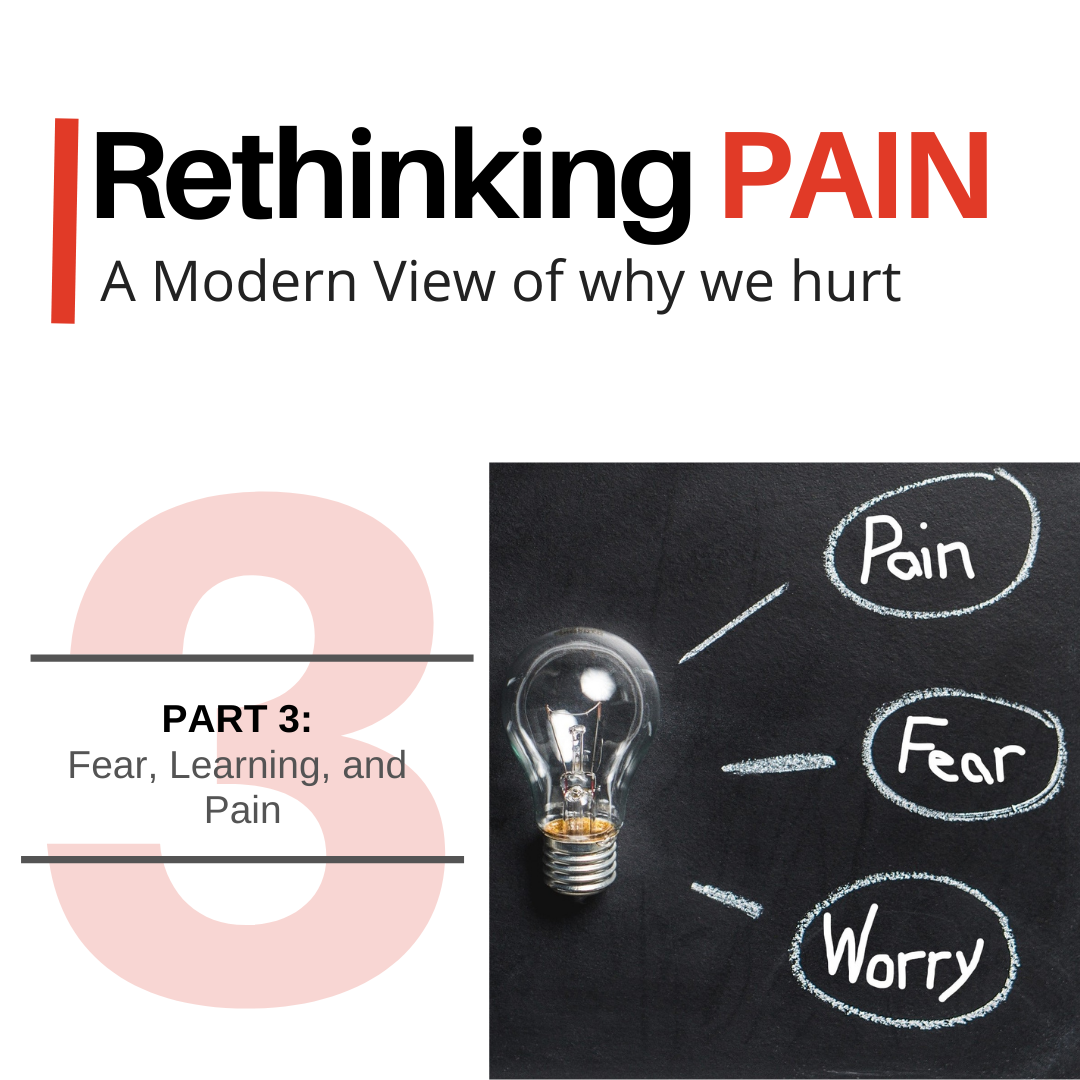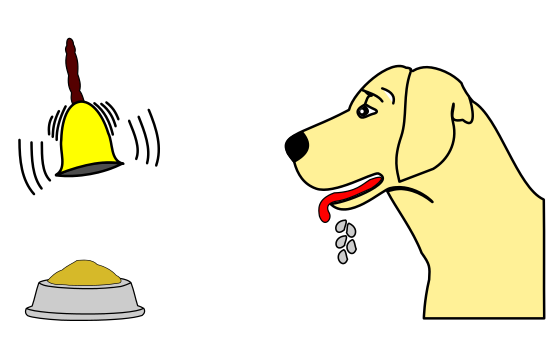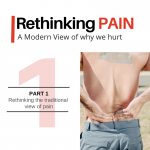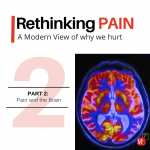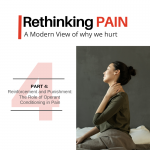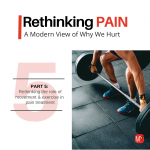PART 3: Fear, learning, and pain
From an evolutionary perspective, pain is a meant to protect us. It’s a tool your brain can call upon to help promote behaviors deemed most beneficial to survival of the organism. These were the key topics we covered in Part 2 of this article series.
But viewed through this same evolutionary lens we see another critical role for pain. That of a powerful teacher.
Again, this links back to survival. Your ancient ancestor needed to be burnt just once to learn not to put his hand into the flame again. Likewise, a painful rash or searing stomach pain after eating a poisonous plant will teach this same ancestor to choose a more desirable flaura the next time he is out gathering or forging for his next meal.
Of course, it is no surprise that past experiences heavily influence our actions and behaviors. Calling on past experiences is a shortcut our brains use to predict potential outcomes of a given situation. The brain uses these predictions to reduce response time when encountering similar stimuli in the future, and to modify behavior in an effort to increase the odds of achieving a desirable result.
Again, this ties back to the powerful influence pain has in driving behavior. But here we see that this influence occurs not only in the moment pain is felt (like the hand in the flame), but also when it’s remembered (like getting sick from the poisonous plant).
In other words, pain from the past shapes behavior in the future. This is learning. And we now know this plays a major role in pain. Both in terms of how the brain interprets and processes sensory information, as well as how we interact with the world around us.
The role of learning in pain
We usually think of learning in an academic sense or with acquiring certain skill sets. Like learning arithmetic or to tie our shoes. But learning in psychology relates long-term changes in behavior based on experience.
Before going too far I should also point here that behavior is not just an observable action. In the scientific community a behavior is simply a mechanistic response to a given stimulus. So here behavior would include things like being shy at a party or biting your nails when you’re anxious. But behavior also includes the physiological response of sweating or increased muscle tension when you’re scared or faced with a stressful situation.
In psychology, there are two key models that have come to dominate our understanding of how learning shapes behavior. Classical and Operant Conditioning.
Pavlov’s Dogs
The Classical Conditioning model was first put forth in the 1890’s by now famed psychologist Ivan Pavlov. You know, the guy with the dogs. Most of us are familiar with Pavlov’s research where he recognized his dogs would salivate when presented with food. Of course, the salivation was a naturally occurring physiological response. It did not have to be learned. It was an innate response tied to the upcoming task of eating.
But in his now famous experiments, Pavlov paired that automated response with another stimulus. The sound of a bell. Pavlov rang the bell as the food was presented to the dogs. After doing this a few times he noticed the dogs salivated when they heard the bell, even when no food was given. The dogs learned to associate the ding of the bell with eating. As such, simply hearing the bell triggered the salivation. The bell became the conditioned stimulus and salivation had become the conditioned response.
This is learning, and it provides a powerful illustration of how the brain loves to create patterns that allow connections between various situations and behavioral responses. As stated above, these patterns allow your brain to more quickly and effectively generate an appropriate behavioral response when encountering the same stimulus.
This groundbreaking discovery by Pavlov had a major impact on our understanding of how learning takes place. It also has significant implications in our modern understanding of pain. But before we get there, we need to look at another classic psychology experiment. A study that extends the ideas of Pavlov and starts to encapsulate the role of classical conditioning with respect to pain.
Little Albert
Extending on the ideas first brought forth by Pavlov, John Watson and graduate student Rosalie Rayner conducted another study in the early 1900’s that has become famously known as the “Little Albert Experiment”.
The study followed the behavioral response of a 9-month-old infant whom Watson and Rayner called “Albert B.” When presented with various stimuli, Albert showed no signs of fear or anxiety of any of the the objects he was exposed to. Including a white rate used by the researchers.
But the next time Albert was presented with the white rat, Watson paired the exposure with the load band of a hammer against a metal pipe. As expected, Albert was startled and frightened by the bang. But interestingly, after repeatedly pairing the bang with the rat Albert began to cry when he saw the white rat. Even in the absence of the bang. As described by Watson and Rayner: “The instant the rat was shown, the baby began to cry. Almost instantly he turned sharply to the left, fell over on [his] left side, raised himself on all fours and began to crawl away so rapidly that he was caught with difficulty before reaching the edge of the table.”
So like Pavlov’s dog, Albert learned to associate the white rat with the bang. But here we see classical conditioning create a phobia. An irrational fear that is out of proportion to the danger posed by the presented stimulus.
Stimulus Generalization
But even more remarkable, Albert’s phobia didn’t just end with white rats. It extended to other objects that shared similar characteristics. For example, in addition to the rat Little Albert demonstrated a phobia of the family dog, a fur coat, and even a Santa mask with the characteristic white beard and mustache.
So Little Albert not only shows us that classical conditioning can lead to unhelpful and irrational fears, but that these fears and their conditioned responses can extend to other similar objects or situations. A process that has been termed generalization. It is here where we can easily see the role of classical conditioning with respect to pain and pain behavior.
Not All Learning is Helpful
Remember, this type of behavioral learning is essentially a shortcut for your brain to help it more quickly respond to a given situation or a similar stimulus.
Think of it this way. The conscious brain represents a neurological bottleneck. It can only attend to so much information at any one moment. So like the CEO of a big fortune 500 company, it must delegate “less critical” tasks to other members of the organization to keep basic day-to-day operations running smoothly. Like so many of your routine habits and behaviors you perform throughout the day, in most cases the CEO isn’t even consciously aware of these ongoing tasks. They simply occur under the radar.
This has clear advantages. When your ancient ancestor comes across that lion there is no time to stop and ponder his various behavioral options. He just needs to run. Immediately.
Learning to fear movement
But as adaptive and necessary as this mechanism of learning is, it can also have a dark side. It can lead to the development of inappropriate fears and behavioral responses. Just like Little Albert, the experience of pain can cause some patients to develop phobias of certain movements or tasks. They learn to associate certain activities with pain or the potential for injury even when there is no actual danger.
Think of the individual who experiences an episode of acute low back pain after lifting or bending. Such an episode would likely result in bending to be painful and sensitive. This in turn will cause the patient to be careful with this and related movements for a few days. While this may be an appropriate response in the short term, the danger lies in the patient learning to associate these types of postures and movements with pain and injury. The result is fear and avoidance of these activities.
Seen through Pavlov’s eyes, bending or lifting becomes the bell, while fear, avoidance and increased pain (fear and anticipation of pain can sensitize the pain system – see Part 2) becomes the conditioned response. The salivation.
The Behavioral Smoke Detector
Remember modern science holds pain as an output generated by your brain that is meant to protect you. This is what we saw with our discussion of a hyper-sensitive pain system. Remember the smoke detector principle ? Here an over-exaggerated response that turns out to be a false alarm is a better “error” to make than failing to sound the alarm if there was an actual fire.
Building on this modern view it is easy to see how these conditioning mechanisms and their behavioral consequences can be viewed the same way. As another type of over-exaggerated response meant to protect you. The difference here is the brain is making a decision to avoid a task or situation that it believes may be harmful or damaging.
Said another way, the brain does not trust it can safely navigate a pending activity or movement. So the behavioral response is fear and avoidance. A pre-emptive strike orchestrated by the brain as a strategy to stop the perceived threat before it occurs.
If the brain does not trust it can safely navigate a pending activity or movement the behavioral response is fear and avoidance. A pre-emptive strike orchestrated by the brain as a strategy to stop the perceived threat before it occurs
Some behaviors matter more than others
Of course, as unhelpful as a dog’s inappropriate salivation or the unwarranted fear of a little white mouse may be, these behaviors are unlikely to significantly interfere with normal day to day existence. But this is not the case with the fear-avoidance beliefs demonstrated with many chronic pain patients. Fear-avoidance related to activities such as bending, lifting, walking, and sitting can have a massive impact on a patient’s life. Inability to participate in such tasks can interfere compromise the ability to earn a living and complete the physical tasks needed for normal daily living.
This is pain-related disability. This is why these theories and mechanisms of learning are so relevant to our modern understanding of pain. And this is why our treatment approaches must account for these beliefs when they are part of the patient presentation.
But before we get to that, we need to understand one more critical aspect of how learning affects behavior. For this we need to dust off our first year psychology textbook one last time, and review the work of Burrhus Frederic Skinner.

